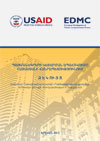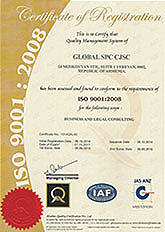ISO 27001 - 2005 ISMS
ISO/IEC 27001, part of the growing ISO/IEC 27000 family of standards, is an Information Security Management System (ISMS) standard published in October 2005 by the International Organization for Standardization (ISO) and the International Electrotechnical Commission (IEC). Its full name is ISO/IEC 27001:2005 - Information technology -- Security techniques -- Information security management systems -- Requirements but it is commonly known as "ISO 27001".
ISO/IEC 27001 formally specifies a management system that is intended to bring information security under explicit management control. Being a formal specification means that it mandates specific requirements. Organizations that claim to have adopted ISO/IEC 27001 can therefore be formally audited and certified compliant with the standard (more below).
Most organizations have a number of information security controls. Without an ISMS however, the controls tend to be somewhat disorganized and disjointed, having been implemented often as point solutions to specific situations or simply as a matter of convention. Maturity models typically refer to this stage as "ad hoc". The security controls in operation typically address certain aspects of IT or data security, specifically, leaving non-IT information assets (such as paperwork and proprietary knowledge) less well protected on the whole. Business continuity planning and physical security, for examples, may be managed quite independently of IT or information security while Human Resources practices may make little reference to the need to define and assign information security roles and responsibilities throughout the organization.
ISO/IEC 27001 requires that management:
- Systematically examine the organization's information security risks, taking account of the threats, vulnerabilities and impacts;
- Design and implement a coherent and comprehensive suite of information security controls and/or other forms of risk treatment (such as risk avoidance or risk transfer) to address those risks that are deemed unacceptable;
- Adopt an overarching management process to ensure that the information security controls continue to meet the organization's information security needs on an ongoing basis.
ISO/IEC 27001:2005 is intended to be suitable for several different types of use, including the following:
- use within organizations to formulate security requirements and objectives;
- use within organizations as a way to ensure that security risks are cost effectively managed;
- use within organizations to ensure compliance with laws and regulations;
- use within an organization as a process framework for the implementation and management of controls to ensure that the specific security objectives of an organization are met;
- definition of new information security management processes;
- identification and clarification of existing information security management processes;
- use by the management of organizations to determine the status of information security management activities;
- use by the internal and external auditors of organizations to determine the degree of compliance with the policies, directives and standards adopted by an organization;
- use by organizations to provide relevant information about information security policies, directives, standards and procedures to trading partners and other organizations with whom they interact for operational or commercial reasons;
- implementation of business-enabling information security;
- use by organizations to provide relevant information about information security to customers.
Benefits of ISO 27000
The benefits of standardization, and of implementation of one or more of the ISO 27000 series are wide and varied. Although they tend to differ from organization to organization, many are common.
The following is a list of potential benefits. As with many items on this website, this is an ongoing project. Please feel free to add further points via the comments option below.
- Interoperability: This is a general benefit of standardization. The idea is that systems from diverse parties are more likely to fit together if they follow a common guideline.
- Assurance: Management can be assured of the quality of a system, business unit, or other entity, if a recognized framework or approach is followed.
- Due Diligence: Compliance with, or certification against, and international standard is often used by management to demonstrate due diligence.
- Bench Marking: Organizations often use a standard as a measure of their status within their peer community. It can be used as a bench mark for current position and progress.
- Awareness: Implementation of a standard such as ISO 27001 can often result in greater security awareness within an organization.
- Alignment: Because implementation of ISO 27001 (and the other ISO 27000 standards) tends to involve both business management and technical staff, greater IT and Business alignment often results.
- Compliance: It might seem odd to list this as the first benefit, but it often shows the quickest "return on investment" - if an organization must comply to various regulations regarding data protection, privacy and IT governance (particularly if it is a financial, health or government organization), then ISO 27001 can bring in the methodology which enables to do it in the most efficient way.
- Marketing edge: In a market which is more and more competitive, it is sometimes very difficult to find something that will differentiate you in the eyes of your customers. ISO 27001 could be indeed a unique selling point, especially if you handle clients' sensitive information.
- Lowering the expenses: Information security is usually considered as a cost with no obvious financial gain. However, there is financial gain if you lower your expenses caused by incidents. You probably do have interruption in service, or occasional data leakage, or disgruntled employees. Or disgruntled former employees. The truth is, there is still no methodology and/or technology to calculate how much money you could save if you prevented such incidents. But it always sounds good if you bring such cases to management's attention.
- Putting your business in order: This one is probably the most underrated - if you are a company which has been growing sharply for the last few years, you might experience problems like - who has to decide what, who is responsible for certain information assets, who has to authorize access to information systems etc.








